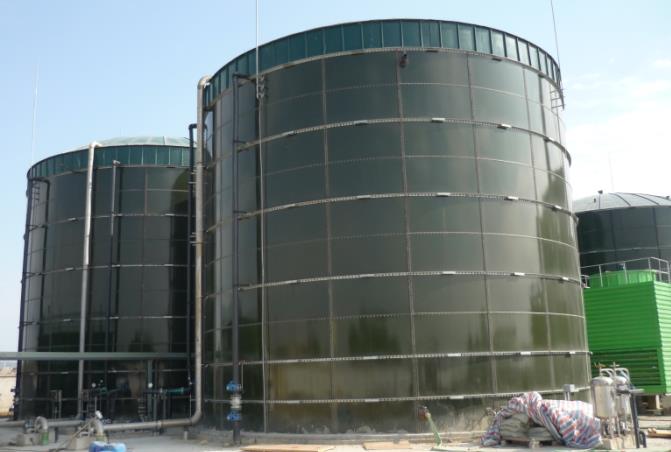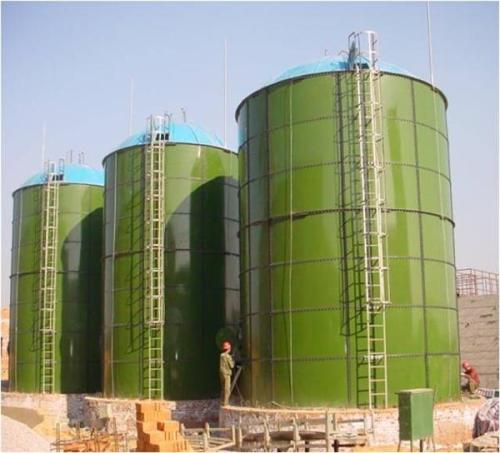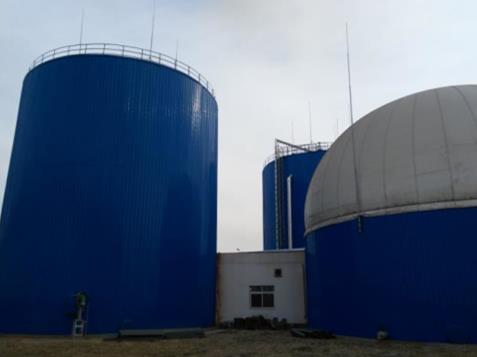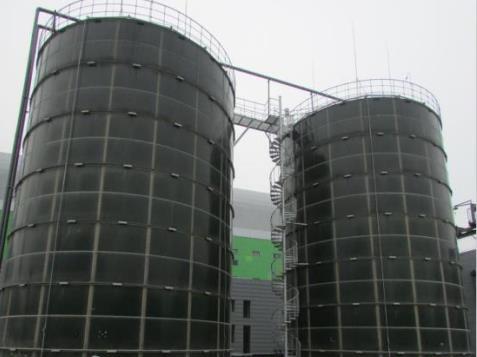anaerobic digestion
2019-01-15 19:24:44 By:NVirotech Bolted Tank (2315)
anaerobic digestion introduce
Anaerobic digestion refers to the digestion of biodegradable organic matter into CH4, CO2, H2O and H2S by facultative and anaerobic bacteria under anaerobic conditions. Anaerobic digestion is widely used in wastewater treatment of livestock manure and municipal organic waste.
Biogas engineering technology can achieve the goals of circular economy development, environmental protection, reducing greenhouse gas emissions and producing renewable energy.
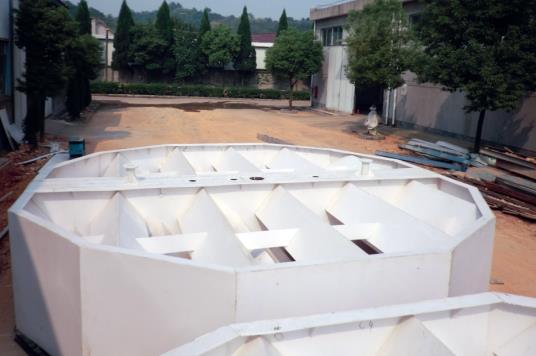
Anaerobic digestion technology is one of the most important biomass energy utilization technologies, it makes solid organic matter into dissolved organic matter, and then converts the energy stored in the waste into biogas for combustion or power generation to achieve the recovery of resources and energy;
after anaerobic digestion, less residual clarity, stable nature; closed and controllable reaction equipment. Make odorous emission. Anaerobic digestion greatly improves the energy balance of organic waste treatment process, and has great economic and environmental advantages.
It has been more than 100 years since organic waste was used to produce biogas, but it was discovered more than 300 years ago. As early as 1630, Van Helmont first discovered that a flammable gas could be produced during the decay of organic matter, and it was also found in the intestines of animals. Subsequently, C.A. Voltal identified a direct link between the amount of biodegradable organic matter and the amount of combustible gas produced in 1776.
In 1808, H. Davy also detected the presence of methane in anaerobic digested gases from cow dung. In 1859, the world's first digestion plant was built in Mumbai, India; in 1896, an anaerobic digestion tank was built in a small British city (Exeter) to treat domestic sewage sludge, and the biogas produced was used as a street lighting fuel.
According to relevant investigations, there are 6-8 million domestic or low-tech anaerobic digesters in the world. The biogas produced by anaerobic digestion is mainly used for cooking and lighting.
The organic composition of biomass is mainly composed of three kinds: carbohydrates, proteins and fats. Carbohydrates are composed of C, H and O, mainly including starch, cellulose, polysaccharides and monosaccharides. Macromolecular sugars degrade to small monosaccharides. Protein is a complex organic compound, mainly composed of C, H, O, N, generally also contains P, S and other elements.
Amino acids are the basic units of proteins and are linked by dehydration and condensation of peptide chains. Fat consists of three elements. Fat is composed of glycerol and fatty acid triuglyceride, glycerol composition is relatively simple, the type and length of fatty acids are different.
In anaerobic digestion process, different organic matter degradation pathways are different. The reaction mechanism of the four stage theory shows that the whole process can be divided into hydrolysis, acidification, acetic anation and methanation.
anaerobic digestion process
Hydrolysis refers to the conversion of complex solid organic compounds into simple soluble monomers or dimers under the action of hydrolytic enzymes. Microorganisms can not directly metabolize carbohydrates (such as starch, lignocellulose, etc.), proteins and lipids and other biological macromolecules, must first be degraded into soluble polymers or monomers to be used by acidified bacteria.
Starch is hydrolyzed into maltose, glucose and dextrin under the action of amylase. Cellulose is a kind of cellobiose which is formed by the combination of sugar-bitter bond and cellobiose. Cellulose degradation is one of the speed-limiting steps in biogas fermentation, because cellulose in natural state is generally combined with lignin to form a highly polymerized state to resist microbial decomposition.
Protein is an important product of plant synthesis. It breaks peptide bonds under the action of protease to form dipeptides and polypeptides, and then regenerates to various amino acids. Fat is first hydrolyzed into long-chain fatty acids and glycerol under the action of lipase. Glycerol is catalyzed by glycerol kinase to produce pityric glycerol, which is then oxidized to pityric di-light pyruvate, then isomerized to phosphoglyceric acid, which is converted to pyruvic acid by glycolysis, and finally into glycolysis pathway to achieve complete oxidation and utilization.
The acid-producing fermentation process refers to the conversion of dissolved monomers or dimers into end products dominated by short-chain fatty acids or alcohols.
These hydrolyzed monomers will be further degraded by microorganisms into volatile fatty acids, lactic acid, alcohol, ammonia and other acidified products, hydrogen, carbon dioxide, and secreted into the cell. Acidogenic bacteria are a fast-growing group of bacteria that tend to produce acetic acid so that they can obtain the highest energy to maintain their growth.
The composition of end products depends on the degradation conditions of gray oxygen, substrate species and microorganisms involved in biochemical reactions. At the same time, the degradation of amino acids firstly achieves deamination through oxidation-reduction of nitrogen to form organic acids, hydrogen and carbon dioxide.
In this stage, more than two carbon organic acids or alcohols produced during the hydrolysis process are converted into acetic acid and other small molecular substances which can be directly used by methanogens.
Under standard conditions, the hydrogen production of organic acids to acetic acid can not proceed spontaneously, hydrogen will inhibit this step of the reaction, reducing the hydrogen partial pressure of the system is conducive to the production of products.
If the partial pressure of hydrogen exceeds atmospheric pressure and the concentration of organic acids increases, methane production will be suppressed. Avoiding hydrogen accumulation at this stage is particularly important. In anaerobic process, hydrogen partial pressure must be reduced by hydrogen nutrient bacteria.
-
Related News:
- super tuff bio gas tank
- biogas septic tank
- bolted tank agent in indonesia
- sewage treatment gfs tank
- bolted steel tank specification oman
- sizes of storage tank for biogass

